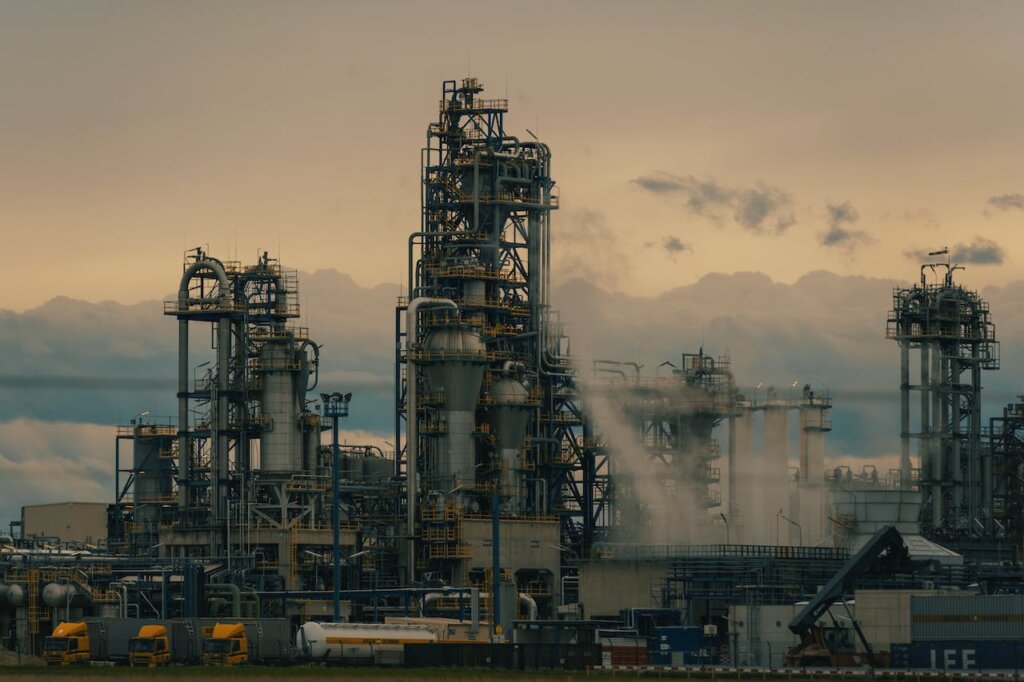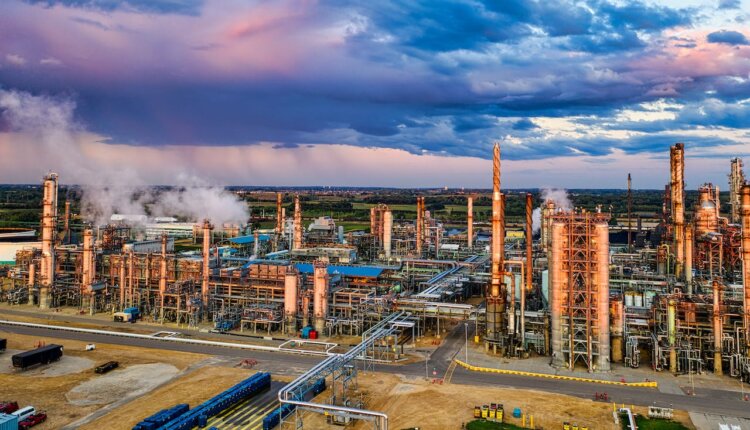S Zorb technology is a process used in the refining of crude oil to remove H2S (hydrogen sulfide) compounds. It’s a form of adsorption technology specifically designed to target sulfur compounds, which are harmful pollutants.
S Zorb technology of (H2S hydrogen sulfide) operates by passing the crude oil through a bed of a specialized adsorbent material that selectively captures sulfur compounds, such as mercaptans and hydrogen sulfide, from the oil stream.
The technology is employed in refineries as part of the hydro desulfurization process, which aims to reduce the sulfur content in petroleum products like gasoline and diesel to meet environmental regulations. By using S Zorb, refineries can comply with stringent sulfur emission standards imposed by regulatory authorities, producing cleaner and more environmentally friendly fuels.
S Zorb is known for its efficiency in sulfur removal and has been implemented in various refineries globally to enhance the quality of refined petroleum products while reducing their sulfur content.
Before dive more let’s refresh some informations:
What is h2s ?
Hydrogen sulfide (H2S) is a colorless, flammable, and toxic gas with a distinctive “rotten egg” smell, similar to the odor of sulfur compounds. It occurs naturally in some environments, including volcanic gases, natural gas, crude petroleum, and hot springs.
H2S is produced during the decomposition of organic matter containing sulfur, and it can be found in various industrial processes such as oil and gas refining, wastewater treatment, and chemical manufacturing.
In addition to its unpleasant odor, hydrogen sulfide is highly toxic. Exposure to even low concentrations can cause irritation to the eyes, nose, and throat. Higher concentrations can lead to more severe health effects, including headaches, dizziness, nausea, and in extreme cases, unconsciousness, respiratory failure, and death.
What is h2s lewis structure ?
H2S Lewis structure of hydrogen sulfide (H2S) depicts how its atoms are arranged and bonded. In H2S, there are two hydrogen atoms bonded to a central sulfur atom.
H H
\ /
S
|
HIn this structure:
- The central sulfur atom has six valence electrons.
- Each hydrogen atom contributes one valence electron.
- There are two single bonds between sulfur and hydrogen atoms, resulting in a total of eight valence electrons around sulfur (six from its own and one from each hydrogen).
This arrangement allows H2S to fulfill the octet rule for each atom: hydrogen has two electrons (a full outer shell), and sulfur has eight electrons (a full outer shell) when considering the shared electrons from the bonds.
What is h2s removal importance ?

Removing hydrogen sulfide (H2S) is crucial for several reasons:
1. Environmental Compliance: H2S is a hazardous gas and a significant air pollutant. Its removal helps refineries and industrial facilities comply with stringent environmental regulations aimed at reducing air pollution and protecting public health.
2. Health and Safety: Exposure to H2S can be harmful to human health, causing respiratory issues, eye irritation, and even unconsciousness or death at high concentrations. Removing H2S ensures a safer working environment for personnel in refineries and other industries where it is present.
3. Corrosion Prevention: Hydrogen sulfide is corrosive and can damage equipment and infrastructure in refineries and oil production facilities. Its removal helps prevent corrosion, prolonging the lifespan of machinery and reducing maintenance costs.
4. Product Quality: H2S can negatively impact the quality of refined petroleum products. Its removal improves the quality of fuels, making them cleaner and more efficient while meeting quality standards.
5. Emission Control: When fuels containing sulfur, including those with H2S, are burned, they produce sulfur dioxide (SO2), which contributes to air pollution and acid rain. Removing H2S minimizes SO2 emissions, thereby reducing environmental impact.
S Zorb technology finds applications primarily in the petroleum refining industry. Its main use is in the removal of sulfur compounds from various petroleum products, particularly in the refining of crude oil to produce cleaner fuels.
Some of its key applications include:
- Desulfurization of Fuels: S Zorb is used to remove sulfur compounds (such as mercaptans and hydrogen sulfide) from gasoline, diesel, and other refined products. This process helps in meeting stringent environmental regulations that mandate lower sulfur content in fuels to reduce air pollution.
- Compliance with Environmental Standards: Environmental regulations require reduced sulfur levels in fuels to minimize emissions of sulfur dioxide (SO2), a major contributor to air pollution and acid rain. S Zorb enables refineries to produce fuels that comply with these standards.
- Enhancing Fuel Quality: By reducing sulfur content, S Zorb helps enhance the quality and efficiency of refined petroleum products. Low-sulfur fuels lead to improved combustion efficiency and reduced emissions in vehicles, contributing to better engine performance and environmental benefits.
- Refinery Operations: S Zorb technology is integrated into refinery processes as part of hydrodesulfurization units, aiding in the overall optimization of refining operations by ensuring the quality of the end products.
The crude oil processed by refineries in developed countries in Europe and the United States is relatively light, with high gasoline fraction content, and the civil fuel is mainly natural gas. This has led to the formation of a diversified pattern of catalytic cracking, hydrocracking, and delayed coking in the wax residue processing equipment of the refinery.
The structure of the equipment determines The blending ratio of catalytic gasoline in gasoline generally accounts for 30% to 40%. Upgrading the quality of gasoline and ultra-low sulfurization (sulfur content less than 10 ppm) are relatively difficult, but deep desulfurization of catalytic gasoline is also a problem that must be solved.
They have developed catalytic gasoline selective hydrogenation and deep desulfurization technology. Representative examples include the Prime G+ technology of the French Petroleum Institute (IFP) and the SCANfining technology of the American Exxon Mobil Company.

While these technologies achieve deep desulfurization of catalytic gasoline, they will also cause a large loss of octane number. However, due to the high proportion of other high-octane number blending components in gasoline, they can withstand it.
The S Zorb technology of ConocoPhillips of the United States acquired by Sinopec is a reactive adsorption desulfurization technology.
In a hydrogen atmosphere, the active component nickel on the adsorbent will catalyze the sulfide in the gasoline to generate hydrogen sulfide. The hydrogen sulfide is immediately adsorbed by zinc oxide on the adsorbent to generate zinc sulfide. After the adsorbent containing zinc sulfide is transported to the regenerator, the zinc sulfide is converted into zinc oxide and returned to the reactor.
In this cycle, catalytic gasoline can be achieved The purpose of deep desulfurization. Compared with hydrodesulfurization, reactive adsorption desulfurization technology has strong desulfurization ability, small olefin saturation, and small octane number loss.
After Sinopec acquired the S Zorb technology, it organized a team to innovate and develop the technology in response to the problems existing in the original technology. They quickly overcame the adsorbent production technology and the short operating cycle of the equipment using the original technology, and realized the comprehensive promotion and application of the technology.
Since then, SITRI has continued to iteratively innovate adsorbents, reducing octane loss by 60% compared with conventional technology. Experts from ExxonMobil in the United States evaluated that Sinopec S Zorb desulfurization technology is currently the most advanced catalytic gasoline deep desulfurization technology in the world.

With the support of the Ministry of Science and Technology and the Refining Division of Sinopec, the Petroleum Science and Technology Institute and the Catalyst Nanjing Branch worked overtime and cooperated closely. The R&D team adopted the method of “research, design, construction, improvement, and production” to Start with technical principles to seek breakthroughs.
The R&D team of Petroleum Science and Technology Institute found that most conventional desulfurization technologies use the principles of hydrogenolysis and cracking to achieve the purpose of desulfurization by reacting with the sulfur element in gasoline to generate hydrogen sulfide. However, there are problems such as large loss of octane number and high energy consumption of the device. question. The R&D team boldly innovated and decided to use the principle of adsorption to remove sulfur from catalytically cracked gasoline.
Relying on the FCAS series of special desulfurization adsorbents with zinc oxide and nickel as the main active components, S Zorb technology can adsorb sulfur compounds in catalytic cracking gasoline on the catalyst to achieve efficient removal of sulfur elements in catalytic cracking gasoline. If FCC gasoline containing sulfur is compared to a pile of sawdust mixed with iron nails, then the desulfurization catalyst is like an electromagnet that can absorb the “iron nails” (sulfur element) from the “wood chips” (FCC gasoline). to yourself, thereby effectively reducing the content of “iron nails” in “saw chips”.
At the same time, S Zorb technology can also continuously transport the adsorbent with sulfur atoms adsorbed to the regenerator for regeneration, thereby maintaining the desulfurization activity of the catalyst. In other words, the R&D team will transport the “electromagnet” filled with “iron nails” to the regenerator, and let the electromagnet drop the “iron nails” it has absorbed in the regenerator and continue to return to the pile of wood chips.

By adsorbing other “iron nails”, the continuous production of ultra low sulfur gasoline is achieved in this ingenious way, which greatly extends the continuous operation cycle of the device.
While breakthroughs in key technologies are being made, construction and design work are also in full swing. In just 12 months, Sinopec built a multifunctional adsorbent production line and produced the first batch of qualified products, completing the “impossible task” in the eyes of foreign experts.
On November 24, 2011, the S Zorb desulfurization adsorbent localization project passed the appraisal. Experts in the industry unanimously believe that Sinopec’s S Zorb technology has broken the blockade and monopoly of foreign technologies, filled the industry gap, and provided solid technical support for the upgrading of oil product quality.
The pace of upgrading, iteration and innovation continues
Go further. The scientific and technological workers of the Institute of Stone Science and Technology did not stop the pace of research and development because of the staged victory. Faced with the company’s actual production problems and the market’s demand for long-term and stable supply of clean gasoline, the R&D team continued to upgrade and iterate S Zorb technology.
In 2013, faced with the problem that adsorbents are prone to deactivation and “strike” under complex working conditions such as processing high-sulfur raw material gasoline, the S Zorb technical research team designed a highly stable skeleton structural component and independently developed a new generation of dedicated desulfurization adsorption Agent high activity and stability adsorbent FCAS-II.
Compared with similar foreign adsorbents, the energy consumption of FCAS-II adsorbent is reduced by more than 50%. At the same time, it can achieve long-term stable operation under harsh working conditions, ensuring the stable production and supply of clean gasoline.
Since 2015, in order to meet the demand for upgrading the quality of National 6 gasoline, the S Zorb technical research team has creatively coupled deep desulfurization and olefin directional conversion based on the concept of molecular refining to develop a multifunctional adsorbent suitable for the production of National 6 standard gasoline.
Compared with conventional desulfurization technology, the loss of octane number can be reduced by 60% solves the problems of ultra deep desulfurization of catalytic cracking gasoline, reduction of olefin content and maintenance of octane number.

In 2017, Sinopec reached a technical cooperation agreement with Klein Company, licensing the special desulfurization adsorbent production process to Klein Company, completing the export of technology to developed countries and creating benefits.
For more than ten years, with the rapid upgrading of gasoline quality, the R&D team has continued to optimize and improve S Zorb technology, and has successively developed FCAS with strong raw material adaptability, adjustable product composition, small octane loss, and high stability.
Series of industrial adsorbents, and achieved innovation in process, engineering, control and equipment, forming a complete set of high efficiency, energy saving and environmentally friendly gasoline adsorption and desulfurization technologies with independent intellectual property rights, promoting the green upgrade of gasoline quality into a stable, economical and fast The “highway”.
Global reputation and international recognition
There is a sound to move forward, but the years are silent. For more than ten years, S Zorb adsorption desulfurization technology has experienced three stages: introduction and absorption, innovative breakthroughs, and leapfrog leadership. In 2022, the domestic market share of S Zorb adsorbent has reached 100%.
In 2020, S Zorb technology achieved overseas licensing for the first time, and jointly won the bid for the second phase of a company’s PMB petrochemical project with the residual oil hydrogenation technology and MIP technology independently developed by the Petroleum Science and Technology Institute. After completion, the crude oil processing capacity will reach 10 million tons per year.
In April this year, the core patent of H2S S Zorb technology of the Institute of Petroleum and Chemical Engineering, “a desulfurization catalyst, its manufacturing method and its application” won a gold medal at the International Exhibition of Inventions in Geneva.

